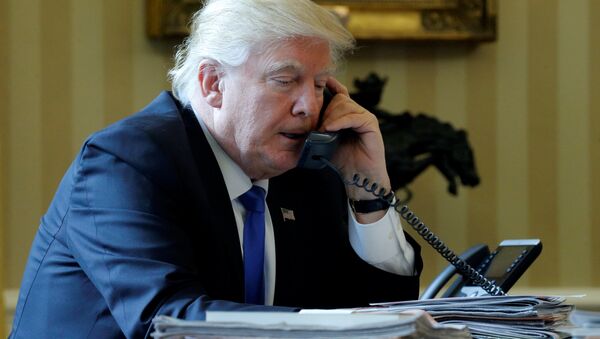US President Donald Trump issued a multipart statement on Friday morning confirming that he had "stopped" a military strike against three sites in Iran after finding out that about 150 people would die in the attack. The tweets followed earlier reports by US media that the president had reportedly approved an attack on Iran in response to Thursday's drone shoot-down, but backtracked at the last minute.
....On Monday they shot down an unmanned drone flying in International Waters. We were cocked & loaded to retaliate last night on 3 different sights when I asked, how many will die. 150 people, sir, was the answer from a General. 10 minutes before the strike I stopped it, not....
— Donald J. Trump (@realDonaldTrump) 21 июня 2019 г.
Trump said ten minutes before the strike was set to be carried out, he "stopped it," saying it was "not proportionate to shooting down an unmanned drone."
....proportionate to shooting down an unmanned drone. I am in no hurry, our Military is rebuilt, new, and ready to go, by far the best in the world. Sanctions are biting & more added last night. Iran can NEVER have Nuclear Weapons, not against the USA, and not against the WORLD!
— Donald J. Trump (@realDonaldTrump) 21 июня 2019 г.
"I am in no hurry," Trump said, boasting that the US military has been rebuilt and was "ready to go," and that anti-Iranian sanctions were "biting" and that more have been added overnight after the drone shootdown incident.
In the tweets, Trump also accused his predecessor Barrack Obama of making a "desperate and terrible deal with Iran," accusing him of giving them a "free path to Nuclear Weapons, and SOON." According to the US president, his decision to terminate the deal and to impose tough sanctions have left Iran a "much weakened nation" that was economically "Bust!"
Later in the day, Trump reiterated in an interview with NBC News that he made the decision not to strike after speaking to his generals about casualties. "They came back and said, 'Sir, approximately 150.' And I thought about it for a second. I said, 'You know what? They shot down an unmanned drone...and here we are sitting with 150 dead people'...And I didn't like it. I didn't think it was proportionate."
Earlier Friday, Revolutionary Guards Aerospace Force commander Amir Ali Hajizadeh said that Iran's air defence troops had sent the US spy drone two warnings before making the decision to shoot it down. Hajizadeh also indicated that air defences picked up a US Boeing P-8 Poseidon military reconnaisance plane with dozens of airmen on board illegally operating inside Iranian airspace, but chose not to shoot it down, saying the drone's destruction would be enough of "a warning to the American terrorist forces." Washington has not commented on Hajizadeh's remarks.
Thursday's drone incident sent already poor relations between Tehran and Washington to dangerous new lows. The two countries' militaries have issued contradictory claims about where the drone was located when it was hit, with both sides releasing maps of the drone's reported flight path. The Iranian map showed the drone to be in Iranian airspace, while the US map indicated that it was in international airspace over the Strait of Hormuz.
The drone's destruction was just the latest escalation of tensions in the region, and follows a series of apparent sabotage attacks against oil tankers in the Persian Gulf and the Gulf of Oman, and the US deployment of a carrier strike group in the Middle East amid claims of an 'imminent' Iranian threat to US interests in the region. Last month, on the one year anniversary of the unilateral US withdrawal from the 2015 Iran nuclear treaty, Tehran announced that it would exit from some of its voluntary commitments under the deal. Iran has nevertheless stressed throughout that it is not interested in pursuing a nuclear weapon.




